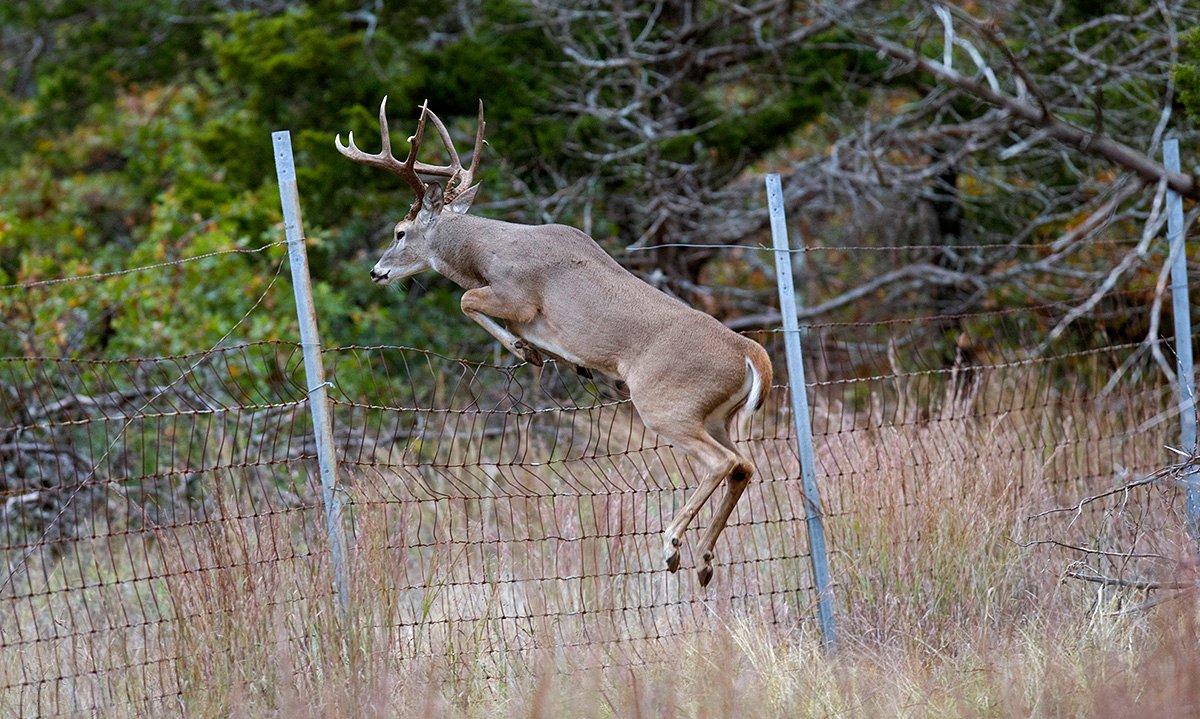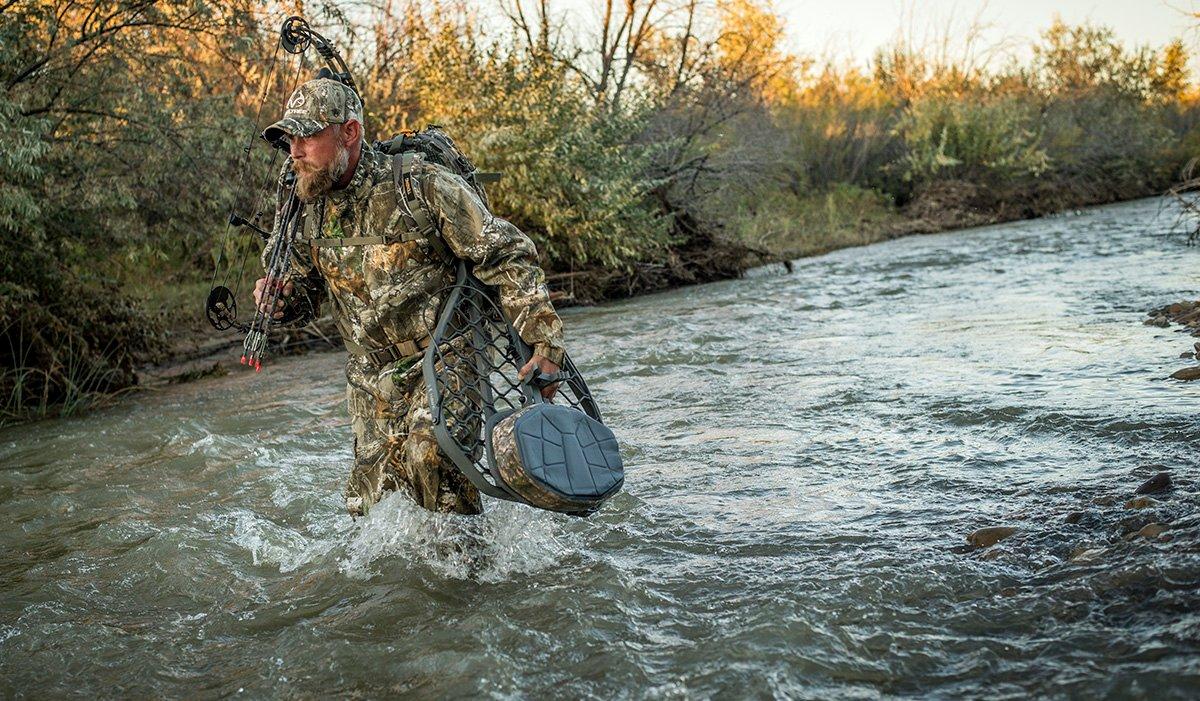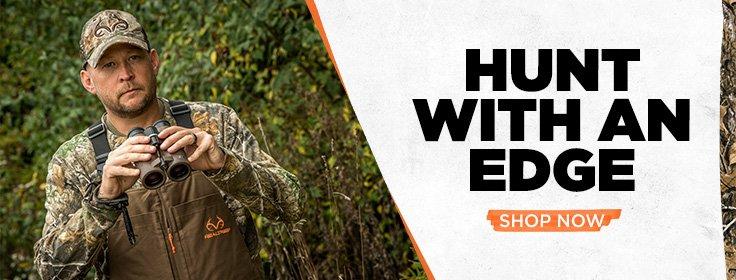From creek crossings to fence gaps to hay bales, a little woodsman ship goes a long way in knowing where to set early season stands
One October I scouted the bends and points of a 400-acre stretch of the Milk River in northeastern Montana and located four good whitetail bucks, two of which would push 140 inches, about as good as the racks get out there. I hunted hard for four days from three lock-on stands we'd scattered in timber pockets along the serpentine river. I saw a lot of deer, but none of the big bucks.
Time to change it up.
On the fifth morning, the wind shifted and blew out of the northwest. I snuck into the south end of a timber patch and set up 20 yards from a deep, dry ditch that coursed through the timber and down to the river. I didn't hang a treestand or bother with the time and noise it would take to build a brush blind. I just stood behind a big cottonwood tree, hung my bow on a branch, and waited.
An hour after sunup I caught a glint of antler. Two bucks were coming, neither of which I had seen before. The 10-pointer in the back was a stud, but the 8 leading the way was no slouch, mature, and Pope and Young for sure. Both deer stepped into the deep ditch and disappeared. I grabbed my bow, inched a step to the left to clear the tree, and drew. The 8-pointer stepped up and out of the ditch and went broadside. My arrow hit with a wonderful thwack, and he ran 60 yards and crashed.
Why didn't I wait for the 10-pointer? I figured a P&Y in hand was better than a bigger buck that might get away in the bush, especially since I was hunting on the ground and eye level with the deer. You've got to use your gut instincts, man.
The more I hunt for mature whitetails across the country, the more I realize how important it can be to gain the element of surprise occasionally. Sometimes your best treestands go cold. Sometimes bucks get used to and skirt them. When that happens, it's time to move and ambush big deer in little spots where they don't expect you to be. The ditch set I told you about is one of my best quick-kill spots. Here are seven others.
The Creek Crossing
On new hunting ground, pack a climber on your back and hike a mile or two along a creek or river in search of a shallow, gently sloping crossing pocked with a mother lode of tracks and at least one set of huge buck prints. Deer that aren't pressured won't jump into deep water and swim, nor will they leap from one high bank to the other. Would you? Like you, the animals will stroll the banks of a waterway until they find a nice, easy spot to walk across.
Check maps and scout for feeding and bedding sites near a water crossing. A river or creek ford 100 to 200 yards from crops or a bedding swamp is a hotspot. Set up near the bottleneck where the predominant wind is right, and hunt for a buck walking the bank and then turning and wading into the water.
The River Squeeze
One time I hung a treestand hard on the Milk River, so hard that when I climbed up and looked down and back all I could see was water.
Straight out from the stand was a long, thick, nearly impenetrable briar patch. One afternoon I looked up and saw a buck coming, strolling through the sliver of flat woods between the river and the thicket like he was walking down Fifth and Main. He was 18 steps off the river and 14 yards down from my stand when I smoked him.
It was one of those great squeezes you should always look for — a flat, narrow sliver of fairly open ground that will funnel a buck close to your post. Whenever you can, hang your stand hard on a river or stream and let your scent drift out and over the water, as I did that day. The gentle sounds of an eddying river will also cover any little noises you might make.
The Fence Drop
A lightbulb ought to pop on in your brain if you find an old wire or board fence that runs back in the woods near a crop field. Walk the fence until you find a spot where the wires and/or the rotten boards and posts have sagged and fallen. A gradual opening of 50 feet or so is great. It's large enough so that a buck doesn't feel confined, but it will funnel deer. A buck will take his time crossing there rather than skittering through.
You might see a trail paralleling the fence for a way, then turning and crossing it at the low point. Hang a bow stand in a tree on either side of the jump where the wind, cover, and visibility are best.
The Hay Bale Turn
One afternoon I sat on a bluff and glassed a sprawling alfalfa field below. Along one edge of the timber, a rancher had stacked big, round bales from an earlier cutting. The row must have been 75 yards long. At dusk deer started pouring into the field. Does and bucks moved out of the woods, funneled around either end of the bales, and started munching greenery.
The next day I sneaked to the field, tested the wind, and hung a stand just off the eastern edge of the bales nearest the tree line. The trail that cut through there looked like a cow path. That evening the eighth deer to come out of the woods and bend around the bales in front of me was a 130-incher, and I whacked him.
A good thing about a bale row is that you can hide behind it when sneaking to and from a treestand. Also, depending on where and how a line of bales is situated, it can offer a passable ground blind if the wind and conditions are right.
The Timber Break
On an aerial map on a phone app, look for a timber edge where pines meet oaks, where mature hardwoods intersect a stand of woods that was thinned five years ago, where a windrow of cedars meets hickories. … Such break lines come in all shapes and sizes across the country, and deer are attracted to and travel along them. In September and October, bucks prowl these edges and lay down lots of fresh rubs. Find an edge where the buck sign is fresh and heavy, and hang a stand nearby.
The First Point of Cover
Several weeks before your bow opener, go to an ag field you intend to hunt in the early season, and sneak 60 to 125 yards back in the adjoining woods and cover. Don't be afraid to scout aggressively this close to bow season. I'm a firm believer that you have to ground scout some, within reason, to find just the right spot to kill a buck with your bow.
Look for the first point of thick cover (maybe a 1- to 2-acre tangle of honeysuckle or greenbrier) off the feed field, and hang your treestand there.
I'm a firm believer that you have to ground scout some, within reason, to find just the right spot to kill a buck with your bow.
A first point of cover is generally not a major bedding area, though you might catch a few deer napping there. Rather, it is an excellent satellite cover where many bucks stop to browse and stage before heading out into a field or plot to eat at dusk. If you locate and hang stands in two or three points of cover around a large field, you'll have a set you can hunt most days regardless of wind direction.
The Buck Hub
Anytime you can hunt where two or three finger ridges converge and peter out into a creek bottom or beaver swamp, do it. If corn or beans and a bedding area are anywhere close, that spot will be a dumping ground for lots of whitetails all season.
Since deer are apt to come from three or four different directions, walking trails on the ridges and in the bottom, it's tough to predict the best winds and trees for stands. Here's what you do:
When bow season opens, set an observation perch 100 yards downwind of a buck hub. Post where you can see well in all directions. If a fat 8-pointer saunters by one afternoon, thank the deer gods and shoot him. But your goal is to watch the ridges and especially the spot where they converge.
Once you get an idea of how, when, and where most deer travel through the area and merge at the hub, move in tighter with a stand or maybe even a blind for a quick ambush. Remember to set up near thick cover whenever you can because that is where the mature bucks are most apt to walk, and where you're most likely to surprise and shoot one.









